
Azure Digital Twin platform with Microsoft Metaverse

When hearing the word “DIGITAL TWIN”, what comes to mind?
Maybe:
A representation of a 3D space? A 3D model of a real-world subject? A true representation of real-world logic and objects? IoT Data? Spatial understanding of the physical world through AR capable devices? A powerful Simulation?
Or The Matrix? !
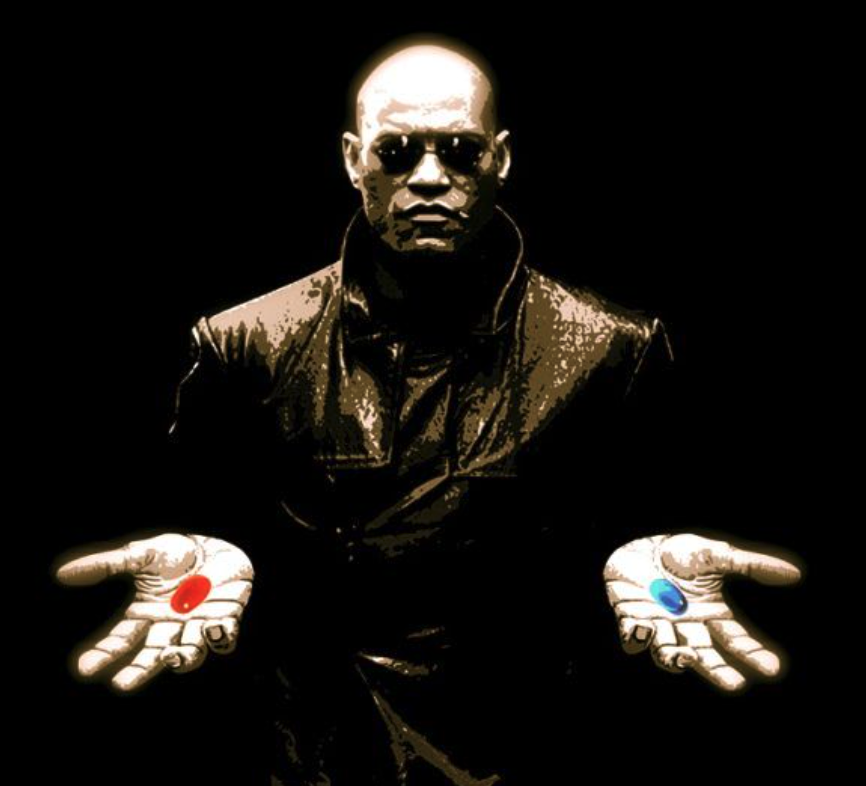
These are all absolutely correct!
I’ve been SO EXCITED that I joined the Azure Digital Twins team after years of experience building Mixed Reality and IoT experiences. To my understanding, Azure Digital Twins is the ladder between IoT and Mixed reality, the connection point between the present and the future for industrial digital transformations. In an ideal world, Azure Digital Twins would handle the expectations and become the single business truth representing real-world spaces, logic, and people. And we are getting there!
_________
In this project, you will see a highlight of major efforts I’ve been focused on since joining the Azure Digital Twins team from May 2021 as a senior design lead.
Part 1. Metaverse Vision
Impact: Shaped the overall story and built the key artifacts that became the Build ‘21 Keynote. The keynote (delivered by Satya Nadella/Sam George) introduced Microsoft’s vision for the Metaverse and how technology and products from across the company will come together to deliver on it.
See the video (1:43 mins) below:
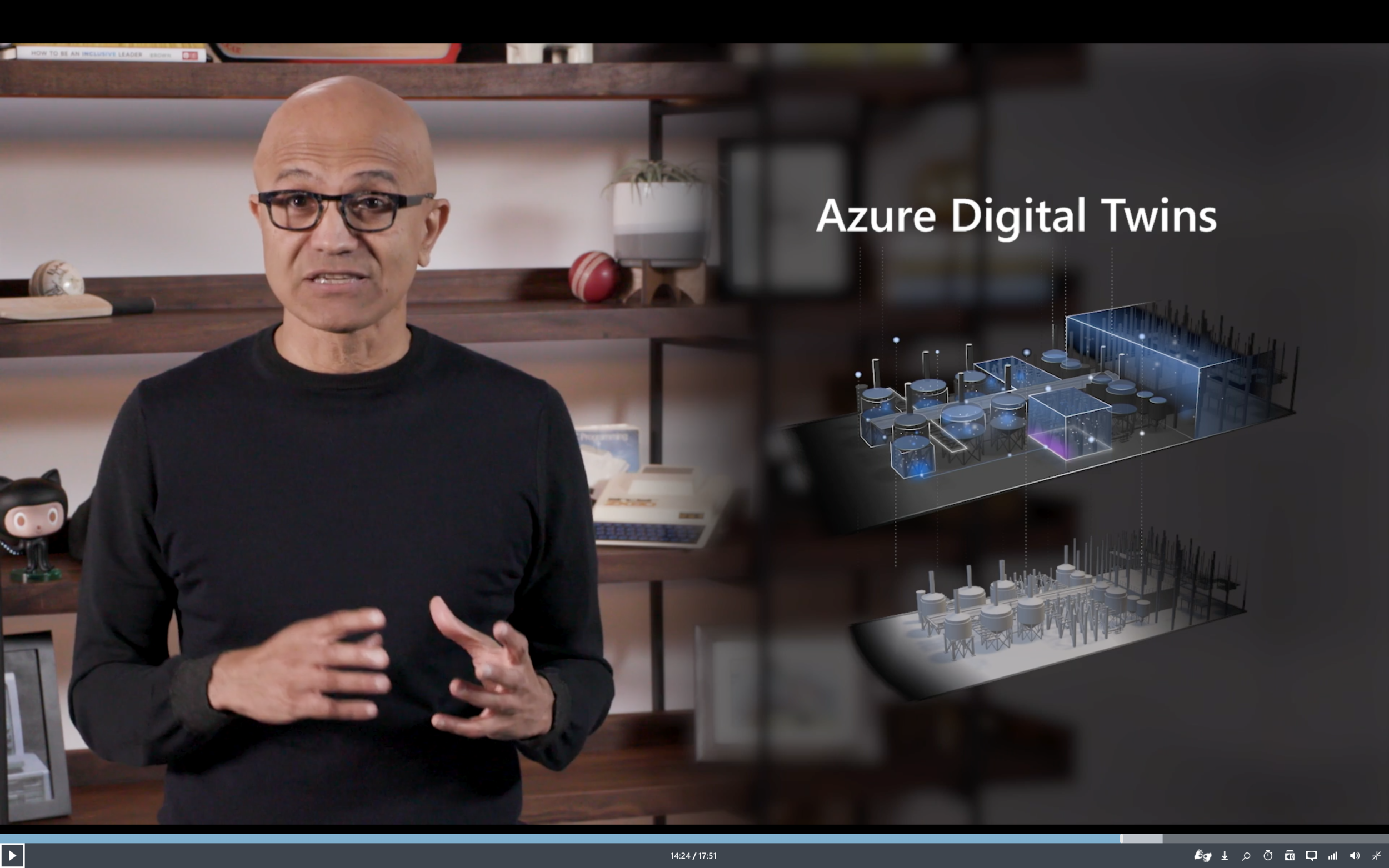
Build 2021 Keynote – Metaverse, from Satya Nadella, CEO of Microsoft
Build 2021 Keynote – Metaverse Tech Review, from Sam George, CVP at Microsoft IoT
In Build 2021, Azure Digital Twins becomes the center of Microsoft’s Metaverse vision. It’s the connection point to all the other layers and represents real-world spaces, logic, and people.
Part 2. Build a shared understanding of customer journeys.
Impact
Developed customer journey maps in partnership with engineering and PMs in order to create clarity and alignment within the team.
These artifacts created a mental framework for understanding both the current product’s capabilities and the unmet customer needs.
The framework organized all existing customer research and identified areas that required future investigation.
The approach was then generalized and was used across the division to provide similar artifacts for all of the products in the IoT portfolio.
Discover the Problem
A. Azure Digital Twins team doesn’t relate to the Metaverse vision.
The vision announced at Build was very different from where the product is today. Many on the product team view the vision as a marketing advertisement, and people had a hard time relating the Build vision to their daily jobs.
To understand where the disconnect comes from, I chatted with many people on the team to learn about the product history. I realized Azure Digital Twins started as a subset of IoT many years ago, which made sense as it was the most effective way to leverage Azure services and the IoT portfolio. The scope of Digital Twins has been constrained within IoT, and that’s where the team was broadly aligned. It was also where all the effort was made in the past and where the roadmap was headed. The Azure Digitals Twins Team has performed in a very traditional Microsoft way, where execution has been prioritized over innovation, so the team was used to a reactive approach to feature prioritization/design vs a more strategic approach with a north star vision.
B. Due to tons of reorgs and team changes, customer signals from the ecosystem never were shared with the Azure Digital Twins team.
I came from Mixed Reality and Connected Store teams, the need for a “Digital Twin” service was huge on those MR products! However, with so many reorgs and team changes, those customer insights didn’t get shared across organizations and were stored all over the place. As a result, people on the Azure Digital Twins team formed a different definition of “Digital Twins” compare to the rest of the Microsoft ecosystem. After the Build conference, the ecosystem team wanted to leverage Azure Digital Twins in their products and there was a huge gap between “what the product can do” vs “what people think the product can do.”
To solve the problems, We needed to look at the entire Microsoft ecosystem and build an updated shared understanding of customer values on the Azure Digital Twins team. It’s important to crisply articulate the product capability with the unmet customer needs. Having an updated thinking framework moving forward inspired autonomous innovation, collaboration, and enabled the team to move from a reactive approach to a strategic approach.
When we look at the tools we could bring to the table, a CUSTOMER JOURNEY MAP would be a great tool to build alignment and share customer signals!
Approach
ADT is a very early-in-stage product with tons of potential to scale up. When we look at major customer journeys within ADT, it should fit for today’s journey and be scalable for a multi-year vision.
I led a two-step approach to build an ADT journey map.

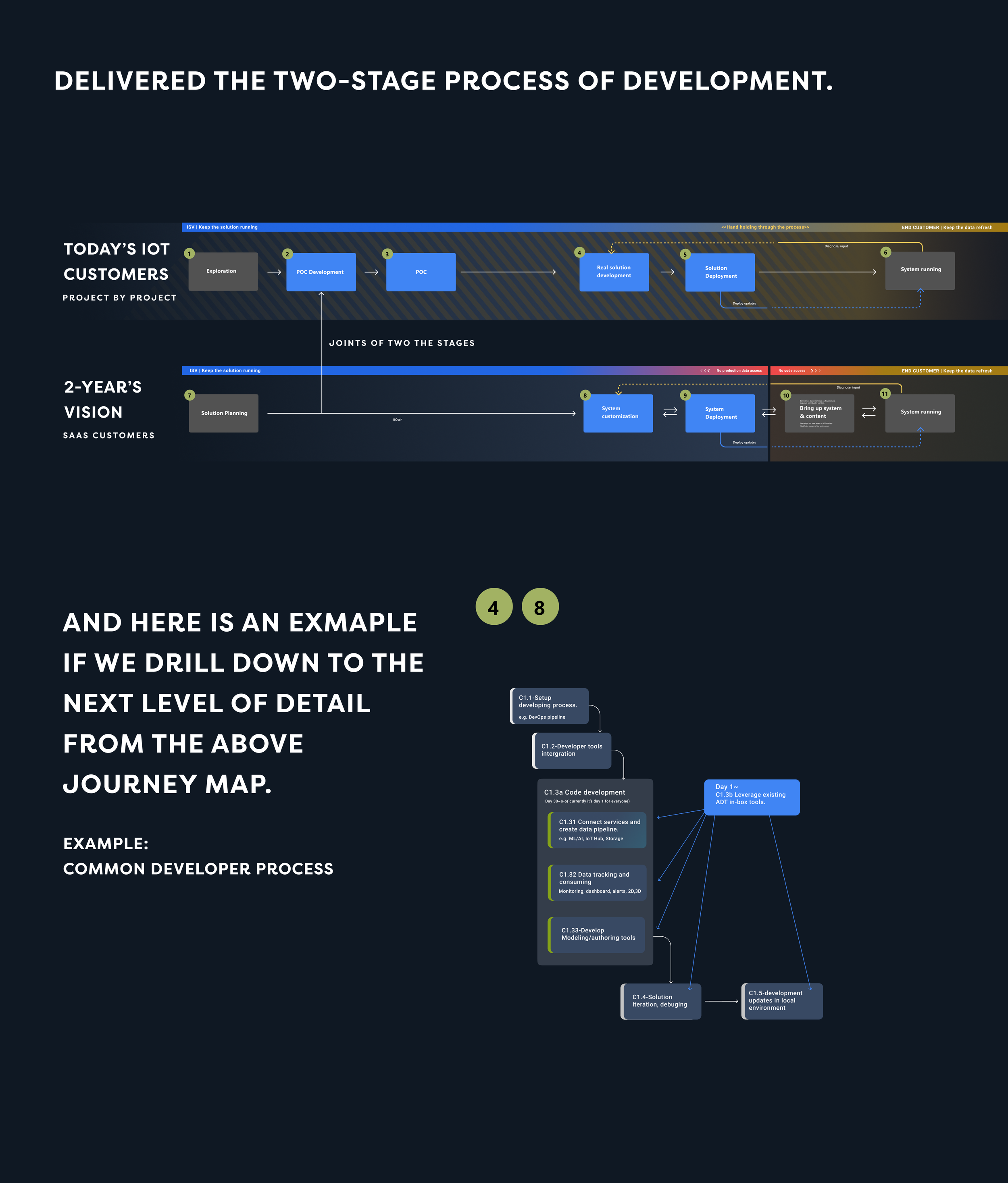
Note: As a PaaS offering, Azure Digital Twins service needs to support the flexibility and scalability that customers need. Azure Digital Twins needs to serve both strategic partnerships (who build repeatable solutions and sell to many end customers) and end customers (who build solutions for themselves). For each step in the journey map framework, we are creating a space that can help us with a variety of detailed jobs-to-be-done.
In Stage 1, we capture a process that represents what customers are doing today leveraging the existing Azure Digital Twins service.
In Stage 2, we capture a process where solution builders moved towards a SaaS offering to their end customers, and Azure Digital Twins needs to support solution builders to get where they want to be.
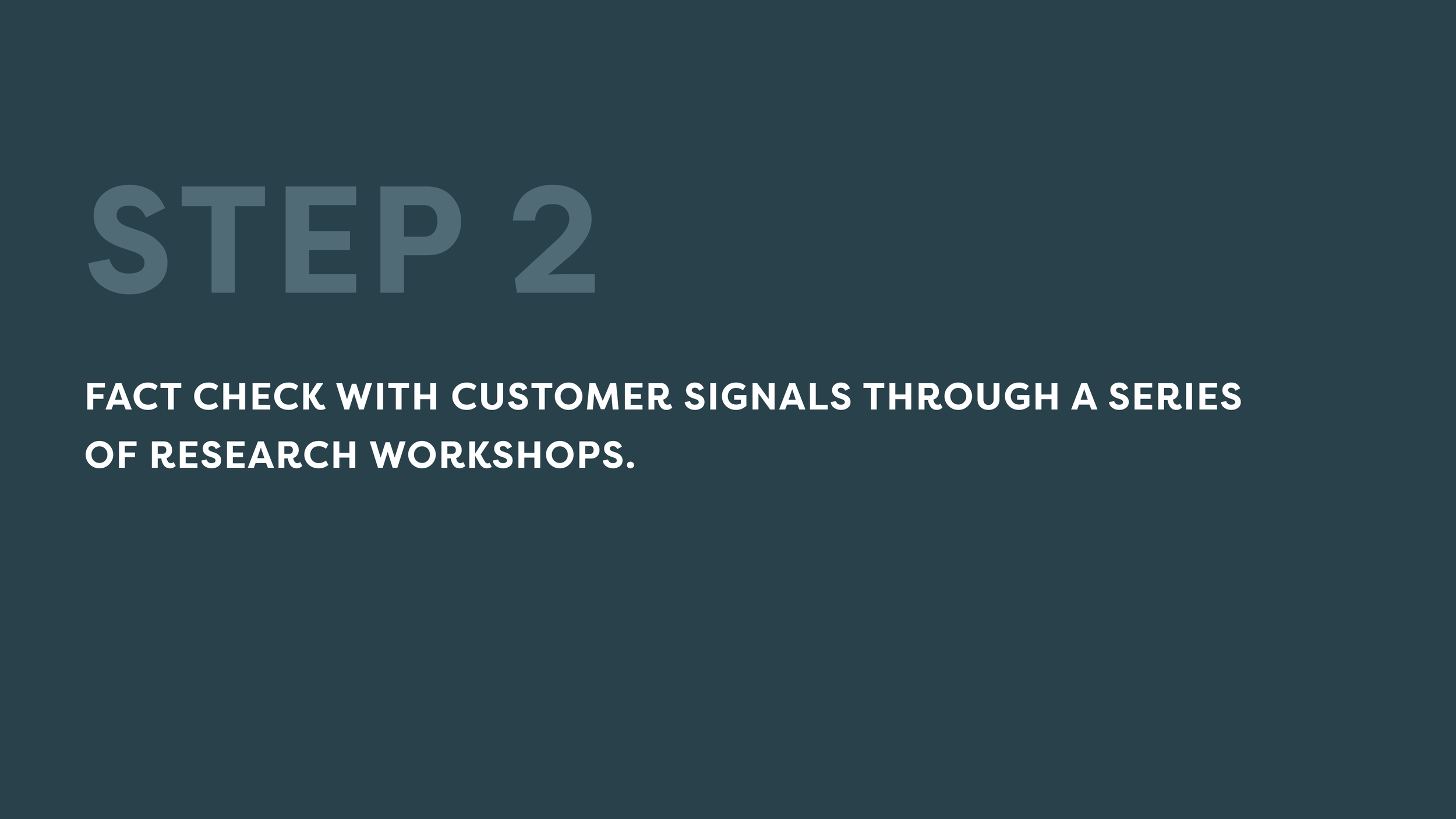
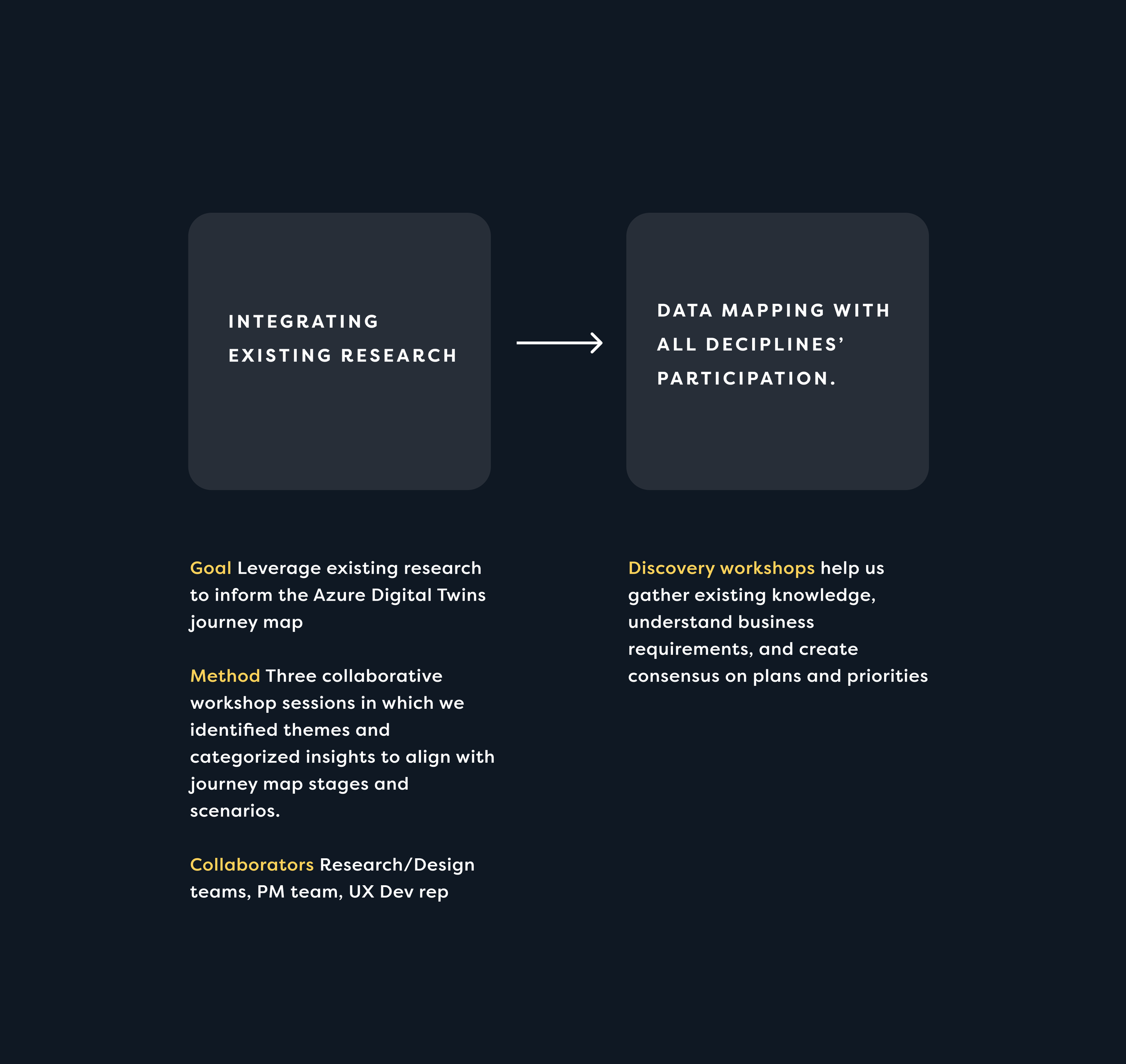


The approach was then generalized and was used across the division to provide similar artifacts for all of the products in the IoT portfolio.

Part 3. Cross-organization envisioning
Impact
Authored proposal for strategic funding requests which included an approach to operationalize the IoT parts of the Metaverse vision and identify integration opportunities between Azure Digital Twins and IoT Platform, Connected Spaces, AI, and Mixed Reality.
I wrote a strategy doc talking about the integration opportunities between Azure Digital Twins and the ecosystem. The doc was shared broadly across organizations. Conversations started and workstreams were created.
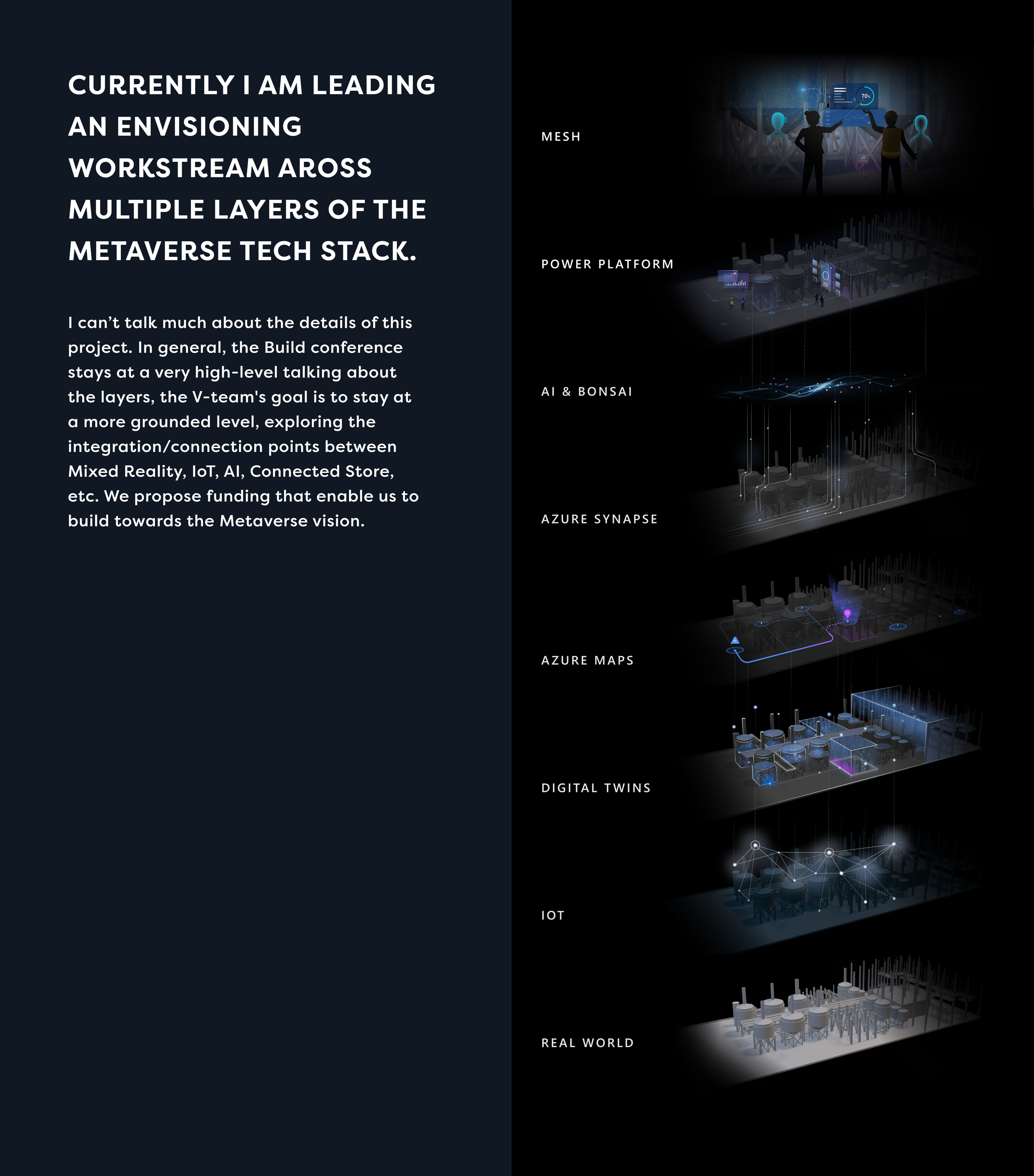
Learnings
Ability to tailor my message and take feedback from people at very different levels within the company from IC engineers all the way up to the CEO.
“No!” doesn’t have to be the end of the discussion. I learned to look at “no” as an opportunity to refine my thinking, negotiate, and generate excitement for my ideas.
If you are interested in chatting more about the details, please reach out :)